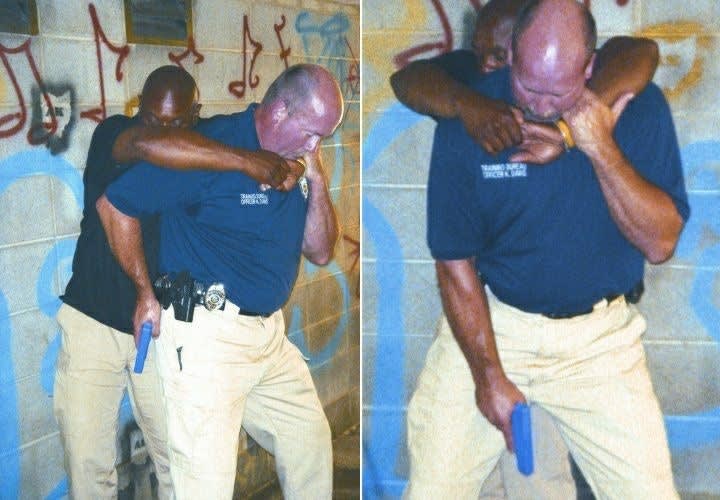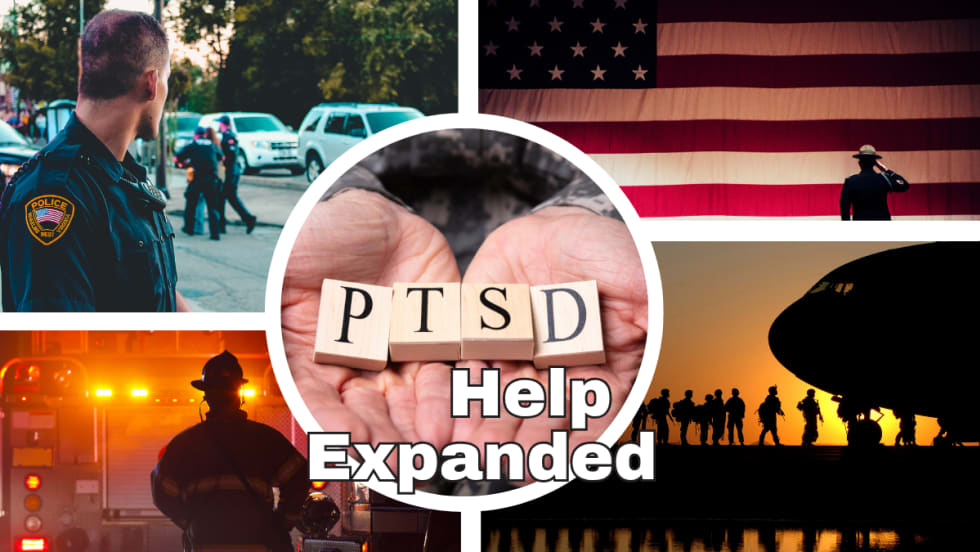It’s zero dark thirty and you’ve responded to a suspicious person call in the parking lot of a local bar frequented by members of the area’s one-percenter biker population. As you begin to field interview the subject, he suddenly closes the distance of your reactionary gap and is all over you. You try to hold him off, and his hand suddenly moves to a leather sheath on his belt and attempts to grab his blade.
Then and there among the closely parked cars, motorcycles, and broken glass you’re in a fight for your life with a beer-breathed, bearded behemoth bent on your destruction. Now is the time to muster all of your skills, abilities, and attributes to win the day. Now is the time you will revert to the lessons learned in training. The question is: Did you train for such up close, personal, and violent encounters?
Most experts will tell you that the average distance for a police shooting is 20 feet, but that’s a misleading stat. The reality is that a lot of deadly force incidents take place within 10 feet and even closer.
Think about it; under 10 feet is the distance of police social interaction, whether good or bad. So odds are that if you’re going to be attacked, the bad guy will make his move when he’s right on top of you.
Space is Time
Space is more than the “final frontier” as Captain Kirk intoned at the beginning of the original “Star Trek.” Space is a valuable asset that you can use to buy time. But when your attacker is within six feet, there’s not a lot of time to buy. Within six feet, every attack is an emergency.
Increasing the space is not a complete solution to the problem. For example, if your attacker has a gun and you turn and run, you will get shot in the back. In addition, since you are reacting to the suspect’s attack, he or she has the advantage of time. So it’s unlikely that moving away will save you. Finally, where exactly in the real world of your patrol area is there enough space that a sudden retreat is possible? Clean avenues of retreat tend to only exist in the sterile environment that trainers have available, such as gyms and training rooms. Try a bob-and-weave tactic in a tenement living room, parking lot, or back alley and see how it stands up.
So what are your options for response to a sudden attack at close range? In simple terms, you can either open distance or close it. If you are behind in terms of reacting, it’s better to crash with the suspect than to try to stand and outdraw your opponent who already has his pistol drawn. To engage in a shootout at this distance may result in what Filipino martial artists call a “mutual slay.”
Yes, the bad guy might have a knife and you might have a gun, but time/distance and lack of readiness may preclude you from getting your pistol out fast enough to stop the suspect before he uses his weapon. Don’t believe me? Try the following drill.
Using a non-functional training gun like a Blue Gun, have someone stand six feet from you with a wooden spoon or training knife held behind his or her leg. When this person begins to strike, try to draw your training gun from your holster before he or she can stab you. Now have your “attacker” safely add some forward pressure, as if he or she were trying to stab you multiple times. This will make it clear to you that although you are armed with a superior weapon, someone close up on you with a knife may have the advantage.
Reaching Out
The good thing about having your attacker right up on you is that anything you do will immediately affect him. Inside touching distance, merely reaching out will put hands on the suspect. At eight feet, one step and reaching out will put your hands on him.
Your best reaction is to move into the attack and counterattack. Imagine that a suspect draws a knife on you at arm’s distance. If you attempt to stand and draw, the result will be multiple knife wounds. So instead of attempting to draw, stop the suspect’s violent attack, counterattack, and use your counterattack to buy time so that you can draw your sidearm and respond with deadly force. Using this tactic, you are much less likely to be seriously injured by a close-up assault. You may even escape harm.












